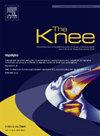Distribution of knee alignment in the Italian arthritic population based on the CPAK classification
IF 2
4区 医学
Q3 ORTHOPEDICS
引用次数: 0
Abstract
Purpose
The CPAK classification categorizes coronal knee alignment matching the arithmetic hip-knee-ankle angle and joint line obliquity. While several studies have evaluated alignment variability in different populations, no data exist for the Italian population. This study aims to assess the distribution of CPAK classification in Italian patients undergoing TKA for osteoarthritis, with secondary objectives exploring gender differences and correlations with anthropometric parameters.
Methods
A retrospective analysis was conducted on 978 consecutive patients who underwent total knee arthroplasty or unicompartmental knee arthroplasty between May 2016 and April 2024. After excluding 284 patients, 620 patients were included in the study. Mechanical hip-knee-angle, Lateral Distal Femur Ange and Medial Proximal Tibial Angle were measured on long leg radiograph. Arithmetic HKA and Joint Line Obliquity were than calculated and patients were divided into the 9 phenotypes of the CPAK classification.
Results
A total of 620 patients were evaluated: The mean age was 69.3 years. The mean BMI was 28.51. The mean mHKA was −4,63 (SD = 8,19) while the mean aHKA was −0.84° (SD = 5). The mean JLO was 174,18° (SD = 4.58). The three most frequent CPAK phenotypes were I (186; 30%), II (147; 23,7%), and III (126; 20,3%), indicating a prevalence of apex distal joint line obliquity. The most common alignment was varus. Female patients showed a greater tendency for valgus alignment (24,4%) compared to males (13%). No correlation was found between anthropometric parameters and alignment.
Conclusion
The CPAK classification distribution in the Italian osteoarthritic population is consistent to that reported in the literature.
Level of evidence Level III.
基于CPAK分类的意大利关节炎人群的膝关节排列分布
目的CPAK分类方法对膝关节的冠状面排列进行匹配算法髋关节-膝关节-踝关节角度和关节线倾角的分类。虽然有几项研究评估了不同人群的对齐变异性,但没有针对意大利人群的数据。本研究旨在评估意大利接受骨关节炎TKA患者的CPAK分类分布,次要目的是探讨性别差异及其与人体测量参数的相关性。方法回顾性分析2016年5月至2024年4月连续行全膝关节置换术或单室膝关节置换术的978例患者。在排除284例患者后,620例患者被纳入研究。在长腿x线片上测量机械髋膝角、股骨外侧远端角和胫骨内侧近端角。计算算术HKA和关节线倾角,并将患者分为9种CPAK表型。结果共纳入620例患者,平均年龄69.3岁。平均BMI为28.51。平均mHKA为- 4,63°(SD = 8,19),平均aHKA为- 0.84°(SD = 5)。JLO平均值为174.18°(SD = 4.58)。三种最常见的CPAK表型为I (186;30%), ii (147;23.7%)和III (126;20.3%),表明关节尖端远端线倾斜的普遍存在。最常见的是内翻。与男性(13%)相比,女性患者表现出更大的外翻对齐倾向(24.4%)。没有发现人体测量参数与排列之间的相关性。结论意大利骨关节炎人群的CPAK分型分布与文献报道一致。证据等级三级。
本文章由计算机程序翻译,如有差异,请以英文原文为准。
求助全文
约1分钟内获得全文
求助全文
来源期刊

Knee
医学-外科
CiteScore
3.80
自引率
5.30%
发文量
171
审稿时长
6 months
期刊介绍:
The Knee is an international journal publishing studies on the clinical treatment and fundamental biomechanical characteristics of this joint. The aim of the journal is to provide a vehicle relevant to surgeons, biomedical engineers, imaging specialists, materials scientists, rehabilitation personnel and all those with an interest in the knee.
The topics covered include, but are not limited to:
• Anatomy, physiology, morphology and biochemistry;
• Biomechanical studies;
• Advances in the development of prosthetic, orthotic and augmentation devices;
• Imaging and diagnostic techniques;
• Pathology;
• Trauma;
• Surgery;
• Rehabilitation.
 求助内容:
求助内容: 应助结果提醒方式:
应助结果提醒方式:


